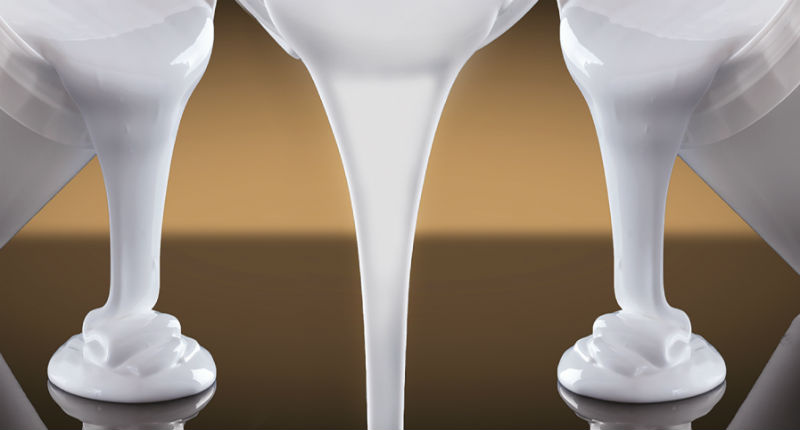How to dilute PVAc adhesives: tips to restore their consistency
- The most popular types of PVAc adhesives
- Why does PVAc adhesive thicken?
- Ways to dilute the PVAc adhesive
- PVAc adhesive dilution instructions
- How to keep the adhesive from drying out?
One of the most common adhesives is PVAc, as it is widely used in everyday life – for example, schoolchildren use it to make handicrafts, glue cardboard, paper and wooden elements together. Apart from that, PVAc adhesive is used in various industries, repair and construction work because of its excellent adhesion properties and low cost. Recently manufactured polyvinyl acetate adhesive is a viscous, pourable liquid that can become too thick over time. Let's find out how to restore it and if it's really possible.
The most popular types of PVAc adhesives
The following types of this adhesive are used in industrial facilities and everyday life:
- Office glue, or "school" PVAc, is used by people in offices and homes to bond paper or cardboard items together.
- Wood glue is the best solution for the woodworking industry, including the manufacture of furniture, baseboards and other elements made of natural materials. It has different water resistance properties (from D1 to D4), their choice depends on the area of the adhesive's application. There is a more detailed description of the properties of wood polyvinyl acetate glue in this article.
- Construction adhesives are added to plaster, cement, and primer mixes, and are also used in the installation of floor coverings such as tile, parquet, or linoleum.
- Multi-purpose adhesives are used for gluing wood, paper and leather products, they show excellent adhesion properties with respect to wood, glass and metal elements and can also be used to replace construction adhesives in various mortar mixtures. A less expensive option is a multi-purpose PVAc. However, this type of adhesive will not work on leather, porcelain, and glass products.

Why does PVAc adhesive thicken?
This adhesive is an emulsion of polyvinyl acetate, water and some extra additives. Simply put, the adhesive becomes thicker as the liquid evaporates from it. This can happen for a number of reasons, the most common being improper storage. Open or loosely closed containers, high temperatures and other factors cause water to evaporate and the adhesive to become too thick. It is also important to check the expiry date in good time: even if all the storage rules are strictly observed, the adhesive may lose its original properties once the shelf life has expired. Always check the expiry date on the packaging and follow the manufacturer's recommendations.
The PVAc adhesive gets too thick: some tips to revive it. If there are white clumps in the glue or you find a dry crust on the surface, don't worry, there are ways to restore it. But if it is completely dried out, there is nothing you can do about it, just throw it away and buy a new one.
Ways to dilute the PVAc adhesive
We have come across a number of tips on the internet on how to dilute adhesives, but not all of them are really practical. Since PVAc adhesives are our business, we can say with certainty that it can only be diluted with water, as it is a water-based adhesive. Forget about petrol, vinegar, acetone or other solvents as they will destroy the structure and properties of the adhesive.
PVAc adhesive dilution instructions
- If there are any flakes or crusts on the surface of the adhesive, remove them first. If you find any jelly-like lumps, leave them as they will dissolve during the operation.
- Prepare the water properly. Firstly, it should be warm (but not hot) and secondly, the maximum amount of water allowed should be up to 10% of the adhesive. Check the consistency after dilution - it should be like thick sour cream. Take care not to add too much water, as excess liquid will completely destroy the adhesive properties.
- Start by adding water in teaspoonfuls, stirring well until the mixture is homogeneous.
- Allow some time for the PVAc adhesive to soak in, do not use it immediately. It is advisable to stir the product thoroughly before each use in order to homogenize its composition.
It is important to note that even if the adhesive was water resistant (class D4) prior to dilution, this property will deteriorate after the addition of water. So make sure you only use this adhesive on products that will not be exposed to moisture or left outside in the rain or frost, otherwise they will come unstuck.

How to keep the adhesive from drying out?
To maintain the original consistency and properties for as long as possible, follow the manufacturer's recommendations:
- Store the PVAc adhesive in its original tightly closed container and ensure that the container is tightly closed each time the adhesive is used.
- The temperature in the room where you store the adhesive should be in the range of +5°C...+30 °C, with humidity not exceeding 60%.
- The average shelf life of adhesives is usually one year, so check it regularly to make sure you have the adhesive on hand when you need it.
Are there any other ways to revive thickened PVAc adhesive? The method described above is the only way to "revive" your glue, but there is an easier way - buy a new one. Our company offers a wide range of adhesives, and Lux-X managers are always available to help you choose the type that best suits your needs. In this article, you will find out more about PVAc. You can get advice or place your order online or by calling +38 (050) 324-06-36; +38 (068) 766-06-36.






